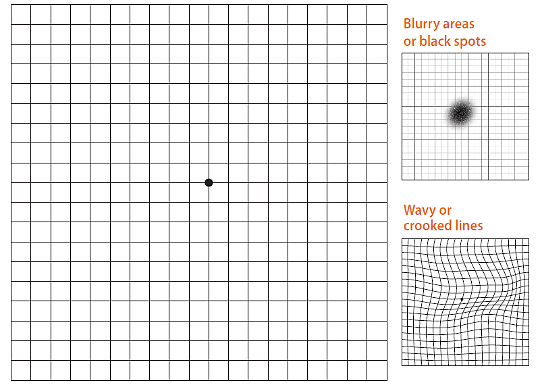 Diabetes is the leading cause of blindness in Canada. Diabetic retinopathy, which results in vision loss, is caused by damage to the blood vessels of the retina. It affects 25% of people with type 1 diabetes and up to 14% of people with type 2 diabetes. Having diabetes also raises the risk of developing other eye problems, such as cataracts and glaucoma. While it can be frightening to lose part or all of your vision, there are plenty of strategies, tools, and resources available to help you stay as independent as possible. Here are some of them.
Diabetes is the leading cause of blindness in Canada. Diabetic retinopathy, which results in vision loss, is caused by damage to the blood vessels of the retina. It affects 25% of people with type 1 diabetes and up to 14% of people with type 2 diabetes. Having diabetes also raises the risk of developing other eye problems, such as cataracts and glaucoma. While it can be frightening to lose part or all of your vision, there are plenty of strategies, tools, and resources available to help you stay as independent as possible. Here are some of them.
Seek help in adjusting to your surroundings
Obtain assistance from one of the associations for the visually impaired (see sidebar “Organizations that can help”) or from a professional, such as an occupational or rehabilitation therapist, for advice on ways to help you change your living environment so you can better manage your daily activities. These changes might include repositioning the lighting in your home, using contrasting colours to highlight important areas (for example, using dark switch plates to mark the location of light switches on a lightcoloured wall or painting doorframes in a contrasting colour), labelling and marking items such as food or medicine or the temperature settings you use most frequently on your stove, getting rid of potential hazards such as loose carpeting and electrical cords, and installing handrails in bathrooms and on stairs to provide a guide.
Make use of low-vision aids
Special lenses and electronic systems can allow you to enjoy activities such as reading, watching television, and using a computer. These can include magnifying lenses (some have a builtin light for better illumination), electronic systems such as closedcircuit television cameras or video cameras that can transmit enlarged images onto a screen, large computer screens, and software that can enlarge print and pictures.
Consider adaptive technology
There are many types of adaptive technology that can help people with impaired vision better perform everyday tasks, including largeprint books or audio books; writing aids such as paper with extrabold lines; specially adapted appliances such as clocks, watches, telephones, and calculators; speechtotext computer software; and optical character recognition software that converts documents into computer text that can be enlarged or read aloud by a speech synthesis program.
Orientation and mobility training
Orientation and mobility specialists help people with visual impairments learn to travel independently by using their residual vision to move around more safely or by providing indepth training on aids such as white canes, guide dogs, human guides, or GPS devices.
Specialized diabetes products
There are many diabetes products for people with poor vision. For example, some blood glucose monitors have largerprint displays and backlighting to make it easier to see readings. Some blood glucose monitors also have speech capability. There are also adaptive devices that can help with insulin measurement, including syringe magnifiers and fixed and flexibledose devices. Insulin pens and insulin pumps can also be convenient options. Having your medications prepared in blister packs or using daily, weekly, or monthly pill organizers with large print or Braille can ensure medications are taken in the correct dose and at the right time.
Organizations that can help
- The Canadian National Institute for the Blind offers support for people who are blind or partially sighted, including products that can make life with vision loss easier and an extensive library for people who are unable to read traditional print.
- The Canadian Federation of the Blind provides white canes free of charge through its Walking Proud Program. Members of the federation assist other blind people in Braille literacy, orientation, and mobility.
- Canadian Council of the Blind has over 65 chapters across the country and is the largest membership based organization of the blind.
- The Alliance for Equality of Blind Canadians is a charitable organization dedicated to promoting the increased inclusion of blind, deafblind, and partially sighted Canadians in all aspects of society.
- Canadian Guide Dogs for the Blind assists visually impaired Canadians with their mobility by providing and training them in the use of professionallytrained guide dogs.
- The American Foundation for the Blind is recognized as Helen Keller’s cause in the U.S. and aims to remove barriers, create solutions, and expand possibilities so people with vision loss can achieve their full potential.
- Associated Services for the Blind and Visually Impaired provides support through education, training resources, community action, and public education.
- Blind Net is a website offering general information about visual impairment as well as links to organizations and companies that provide resources and aids.
 What to watch for
What to watch forSymptoms of diabetic retinopathy include:
- blurred vision
- flashes of light in the field of vision
- sudden loss of vision
- blotches or spots in vision
 Prevent the progression of poor vision
Prevent the progression of poor vision
There are steps you can take to catch retinopathy early and prevent its progress:
- Book an appointment with your optometrist or ophthalmologist at least once a year—or more often if your healthcare professional advises.
- Strive to maintain optimal blood glucose, blood pressure, and blood cholesterol levels. Discuss your targets with your physician or diabetes educator.
- Know your target A1C (a test that reflects your average blood glucose level over three months) and aim for that level. For most people with diabetes, the A1C target will be 7% or below.
Amsler Grid

- Look at the grid pattern with one eye at a time (cover the other eye).
- Focus on the black dot in the centre.
- If any areas on the grid appear blurry, if the lines appear wavy or crooked, or if you see black dots, contact your eye care professional.

